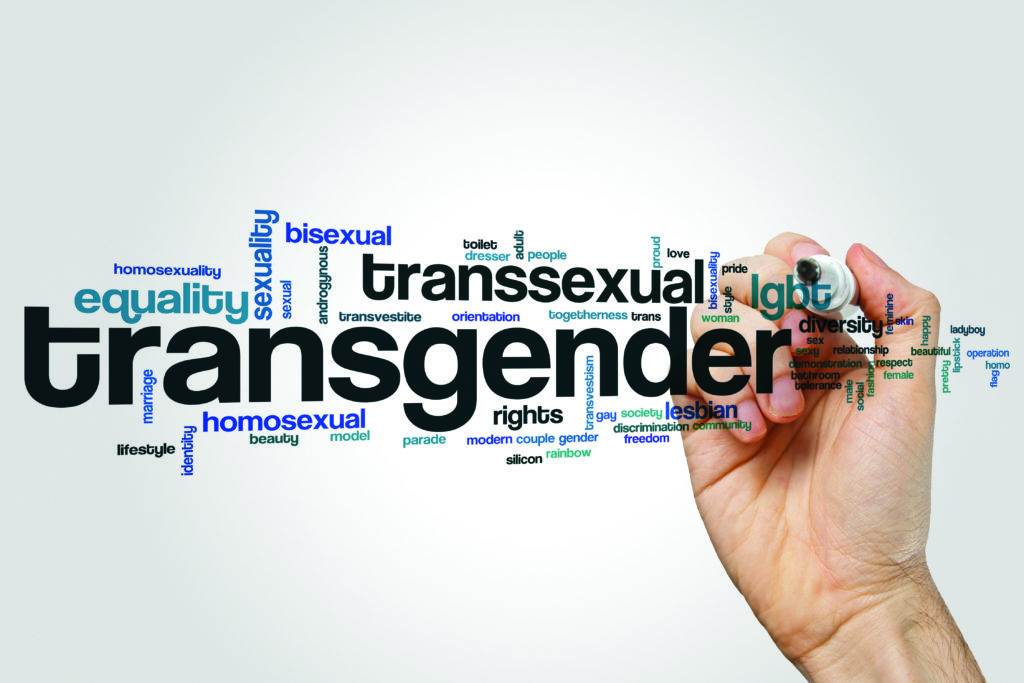
A Primer for Cis People
One of my neighbors is a 7-year-old girl. She was born with a penis, but she always knew something else was going on. If you saw her playing with her girlfriends in the street, wearing a dress with her hair in a ponytail, you’d never suspect she was anything but an ordinary XX child. But that little girl has been forcing all the grownups around her—out of sheer love—to become savvier about gender. It’s happening all around—young people are
challenging everything we thought we knew about gender.
The percentage of US people identifying as trans has doubled since 2016. Partly that’s people daring to come out. The Internet has helped—young people can find each other and realize they’re not alone, or crazy, and that
their feelings mean something. According to the LGBT group GLAAD, 3% of us are trans. More and more people are asking about it. So here’s a far-from-perfect primer from a cis ally.
Sex is physiological. It refers to what genitals you have, or what chromosomes, or what hormones you’re running. More or less. The more you investigate, the more complicated it becomes. But basically, sex is based on your body.
Gender is your identity as masculine or feminine. It’s what you feel yourself to be.
Transgender people are people who were assigned to a gender when they were born (on the basis of their genitals), but who don’t identify with that gender. They may or may not identify with the other gender. Not all trans
people take hormones or opt for any kind of surgery.
Cis-gender is a term coined for people who feel their gender designation at birth to be accurate. The gender they feel inside matches the shape of their body outside.
Intergender is someone who doesn’t identify with the gender they were assigned at birth, but who doesn’t identify with the other either. Sometimes they’re in a process, and sometimes they’re staying right there, happy in the
ambiguity. They also refer to themselves as gender non-binary, meaning they don’t conform to the two-gender norm.
Intersex is someone whose body combines both sexes or is in between, in terms of hormones, chromosomes, and so on. There are as many intersex people in America as there are redheads.
“Queer” is a reclaimed ex-slur that serves as a catchall for non-conforming. It means someone who’s getting creative about the whole field of gender and sexuality.
A transvestite is generally a straight man who likes dressing in women’s clothing. He still knows he’s a man; he just digs wearing dresses. The term is outmoded; a more up-to-date term is cross-dresser.
Transsexual is an outmoded word for a transgender person.
“Tranny” used to be a cool reclaimed word used by trans people, but you wouldn’t use it now unless you wanted a smack in the snoot.
Pronouns are an issue. If you don’t know whether someone’s a “he” or a “she” just ask them what pronoun they go by. Some people prefer “they.” That used to be the plural, but it’s the only non-gender-specific third-person
pronoun we have in English, so get used to it. Don’t worry if you get it wrong; apologize and try again.
Trans people have always been around. Within Native American cultures, trans people are called “two-spirit” people because they carry both male and female energy. Two-spirit people transcend boundaries, including that between the earth and the spirit world. They traditionally held powerful and important roles as teachers and healers.
Recognizing trans people muddies the waters of gender. Some radical feminists reject trans women. Trans activists have branded them with a new slur: TERF (trans-exclusionary radical feminist). The left regularly tears itself into pieces warring over these issues. As a feminist for 40 years I’ve noticed that while people may be easy enough to hate in the abstract, they’re easy to love when you actually meet them. Trans people are just people.
A gender non-binary lesbian friend said she thinks that when cis women are rattled by the presence of trans women, it reflects a mentality of scarcity: None of us feel like we’re good enough as women. Wow, that rings true! Most of us feel that if we were a bit skinnier here, or a bit curvier there, or had better hair, or any number of other variables, we’d be more “feminine,” more “womanly,” more “attractive.” Why are we all competing over who’s a “real woman”?
What I’ve come to is this: I want all willing women in the sisterhood. I want my non-binary lesbian friend, and my little white girl neighbor, my fat friend who struggles so hard to fit the skinny norm, and our Black friend who let her hair go wild because to hell with racist beauty standards. I want my femmy lesbian friend and her butch wife, and my straight cis neighbors who sip Chardonnay while bitching good-naturedly about their husbands. There are many ways to be a woman. Enough for all of us.
I hope this little primer doesn’t offend you. But if it does, then you’ve just entered a huge global dialogue. The topic needs far more pages than I have here, and I have had to leave out so much. This primer was intended to help cis folks get started, and in writing it I’m grateful to trans friends and their families for many generous conversations. The vital thing is that we talk to each other and listen to each other, as cis women and trans women, as Black, brown, white, and indigenous women, as working- and middle-class women, as 7.6 billion differently embodied people. Be well.
Rachael Vaughan, MFT, is a licensed psychotherapist and an associate professor at the California Institute of Integral Studies. She is a lifelong feminist and an ally who thinks trans people should not have to do all the work of educating cis people. Her passion is inclusion.